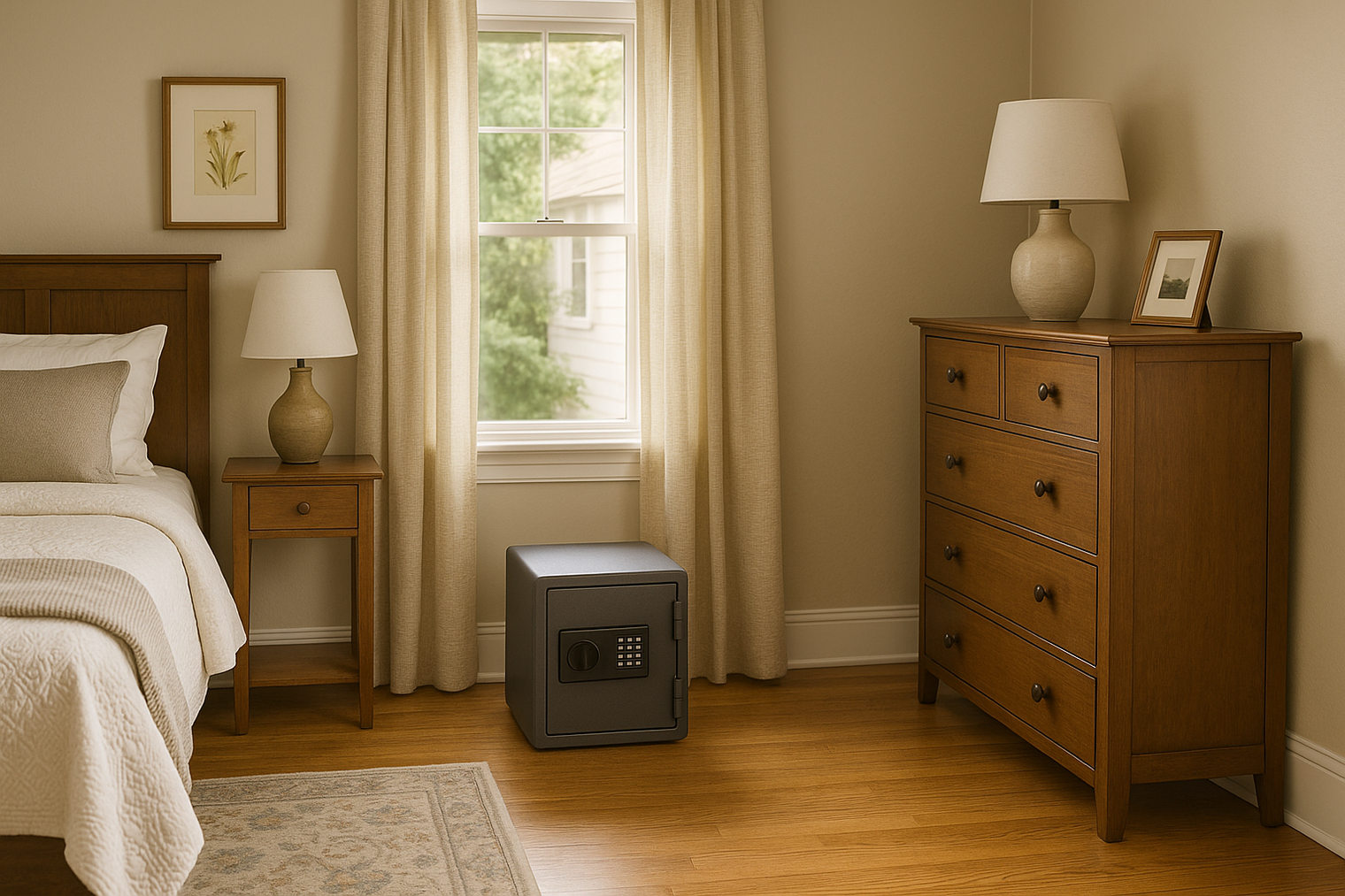A safe—especially a fireproof or burglary-resistant one—is a smart investment for any household or business. But to get the most out of it, you need to know what to store inside, and just as importantly, what not to.
Whether you're storing personal documents, backup drives, or emergency cash, choosing the right protection method—from heavy-duty safes to fireproof bags or pouches—can make all the difference in how well your items survive a fire, flood, or break-in. Below, we walk through the best practices for storing your valuables using document fire safes, fireproof document bags, and more.
What to Put in a Safe
1. Vital Personal Documents
Safes are ideal for storing fireproof safe documents such as:
-
Birth certificates
-
Passports
-
Property deeds and vehicle titles
-
Marriage or divorce certificates
-
Social Security cards
To add a layer of heat protection, place these items in a fireproof document bag or fireproof envelope before placing them inside the safe. These materials are especially useful for thin or fragile documents that may be sensitive to smoke, heat, or moisture.
If you're comparing a fireproof bag vs safe, know that fireproof bags are best used inside the safe, not in place of one.
2. Emergency Cash and Backup Cards
A small amount of emergency cash is always helpful. Store it in a fireproof cash box or fireproof money box to ensure it won’t ignite or degrade in high heat. These containers are often UL-rated and small enough to fit inside a standard home safe.
In addition, a fireproof cash pouch or small fireproof bag is ideal for organizing currency, credit cards, and spare IDs separately within the safe.
3. Legal and Financial Documents
Many legal records are irreplaceable or take weeks to recover. Store these in document fire safes, especially if your business relies on them:
-
Insurance policies
-
Wills and trusts
-
Powers of attorney
-
Tax returns and loan agreements
-
Investment records and retirement account information
For extra protection against both fire and water, use the best fireproof waterproof document bag to hold these papers inside the safe.
4. Valuables and Sentimental Items
Many people store jewelry and personal items in safes, but it's important to also think about fire resistance. Consider using fire proof bags to wrap:
-
Jewelry, heirlooms, and rare coins
-
Collectibles or limited-edition items
-
Family photos stored on SD cards or USB drives
To protect digital media, verify that your safe is ETL-rated for electronic storage—or use fire-resistant accessories for added protection.
5. Digital Media and Passwords
If you use external hard drives, USB flash drives, or backup discs, they should be stored inside a fireproof document bag or a fireproof battery bag, then placed inside the safe. These devices are highly sensitive to heat and require lower internal temperatures for survival than paper does.
Also, store physical copies of important passwords or encryption keys—especially if you use password managers or 2FA devices. Keep these secure inside a small fireproof bag if you're organizing multiple accounts or family data.
What Not to Put in a Safe
Even the best safes have limitations. Here’s what you shouldn’t store in a standard residential fireproof safe.
1. Items That Require Immediate Access
Avoid storing items you need urgently or daily inside your safe, such as:
-
Prescription medications
-
Car or house keys
-
Mobile phones, backup batteries
These items should be kept in a quick-access emergency kit instead, especially during a fire evacuation.
2. Large Sums of Cash
While a small cash reserve is wise, avoid keeping large amounts of money at home long-term. Safes can be breached during theft, and unreported losses may not be insured. Banks or deposit boxes are safer for higher amounts.
3. Perishables and Sensitive Materials
Your safe is not a refrigerator or humidity-controlled unit. Do not store:
-
Food or liquids
-
Old photos or magnetic tape (unless archival-rated)
-
Chemical-based products
If you're unsure, check with the safe manufacturer or use sealed fireproof document pouches with desiccant packs for extra moisture control.
4. Flammable or Hazardous Materials
Unless your safe is specifically rated for firearms or hazardous items:
-
Do not store ammunition
-
Avoid fuel, gas lighters, or chemicals
-
Store lithium-ion batteries only in a fireproof battery bag rated for thermal containment
Fireproof safes are designed to resist heat—not to suppress explosions or contain hazardous vapors.
Conclusion
A fireproof safe is one of the most effective ways to protect your essential records and valuables. But how you organize the inside of your safe—using accessories like a fireproof document bag, fireproof cash pouch, or fireproof envelope—makes a significant difference.
If you're comparing storage solutions, remember:
-
Use fireproof bags as internal protection, not a substitute for the safe
-
Look for UL/ETL certifications on both the safe and your storage bags
-
Choose solutions suited for paper, digital media, and valuables alike
The best fire protection is layered. A high-quality safe, combined with the best fireproof bag for cash, sensitive documents, and electronics, provides peace of mind in both home and office environments.

